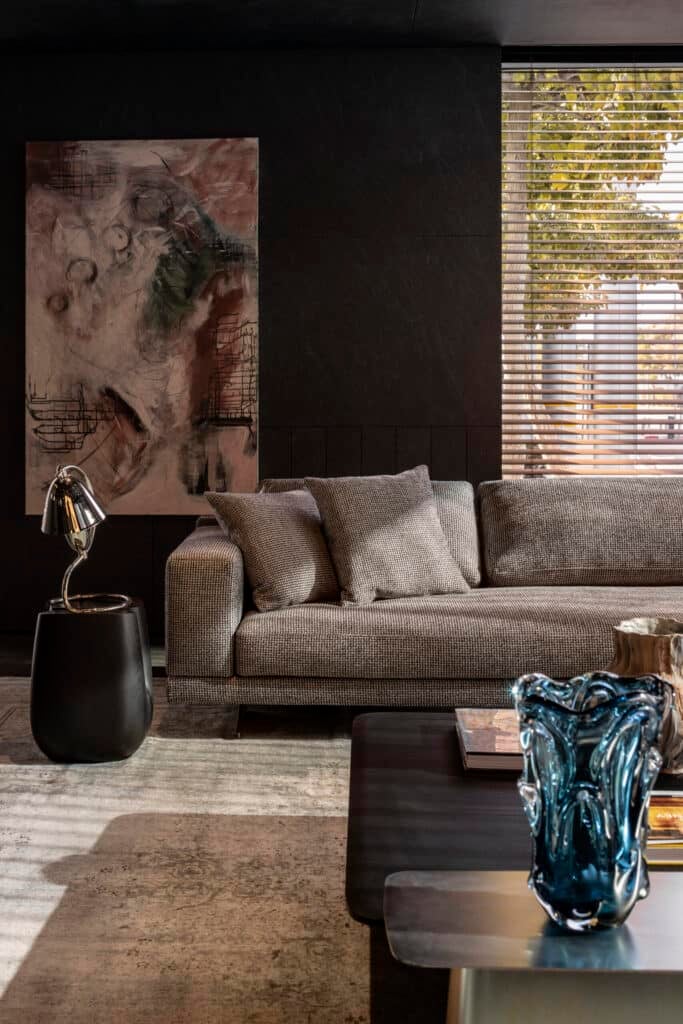Everything Is Better in Black / MOTIVA
March 7, 2023Photographed by Eli Cohen
Marie Lenclos is an artist of many talents. We were impressed to hear her list the skills and disciplines she has experimented with during her career – a list which includes embroidery, sewing, 3D design, video, drawing and oil painting.
"Playing with the local tradition colour"
Marie Lenclos is an artist of many talents. We were impressed to hear her list the skills and disciplines she has experimented with during her career – a list which includes embroidery, sewing, 3D design, video, drawing and oil painting. However what stands out about her recent work is her mastery of a few very specific
elements – the medium of oil paint, a limited colour palette and a focus on the urban landscape surrounding her studio in southeast London. Marie often focuses on the influence of family when describing how her practice has evolved over time. She began painting in her garden from a young age, overseen by the encouraging but critical eye of her father, Jean Phillipe Lenclos, a successful designer colourist himself. By the time Marie started her MA in art and design at the Royal College of Art in 1999, she had started a family of her own. During this period she began using video as a creative outlet. Her films “focussed primarily on the difficulties in accessing public transport and travelling around London for women with buggies.” “I suppose I started focusing on buildings and streets around that time.” she continues. She would often use the urban landscape of south London, which would become so central to her later work, as a background for interviews she conducted during this time.
"Rural grain store buildings inspire a minimal extension in the British countryside"
The decided stillness and tranquillity which abounds in her current work provides a stark contrast to her earlier focus on the moving image and the stories of young parents struggling with the hustle and bustle of London’s public transport. Marie prefers to work from photographs than painting the urban landscape from life. The reasons for this are partly practical: “The faff of carrying equipment, finding a subject, setting up a mobile studio, interacting with walkers, dealing with the weather… I find it hard to embrace these challenges.” The process of photographing first, then painting in the quiet of her studio, “music in my ears, without disturbances,” is important to her process. Working from the already-framed view of her photographs, “reality is simplified, and perspectives become my own,” she explains. The shift away from narrative in her recent work, avoiding the depiction of human interactions in her cityscapes allows her to meditate more carefully on colours and shapes, or the particular play of light at a certain time of day. “My intention is to focus on the physical environment, what I see and perceive of it internally, rather than on interpreting or offering a narrative about the people within it.”

Photo: Courtesy of Matchesfashion
Marie’s use of colour is an element of her work for which she is consistently praised. She feels at ease with a restricted colour palette and will often make a single hue the focus of a painting. It is not a surprise, then, that Marie has spent time experimenting with colour through purely abstract compositions: “I would create a set of lines on a canvas and fill them with colour, trying to achieve a feeling, harmony or dissonance.” She adds that this abstract work forms a kind of “research” for the composition of her cityscapes. When Marie looks at the architecture of south London, she is fascinated by the “lack of ornamentation” and “brutal necessity” and of functional architecture like bridges and train lines. By picking out subtle colour combinations and crisp lines hiding in the urban sprawl, she emphasises the quiet elegance of structures which often stand as “unseen, unloved, marks of modern society and its development.”


